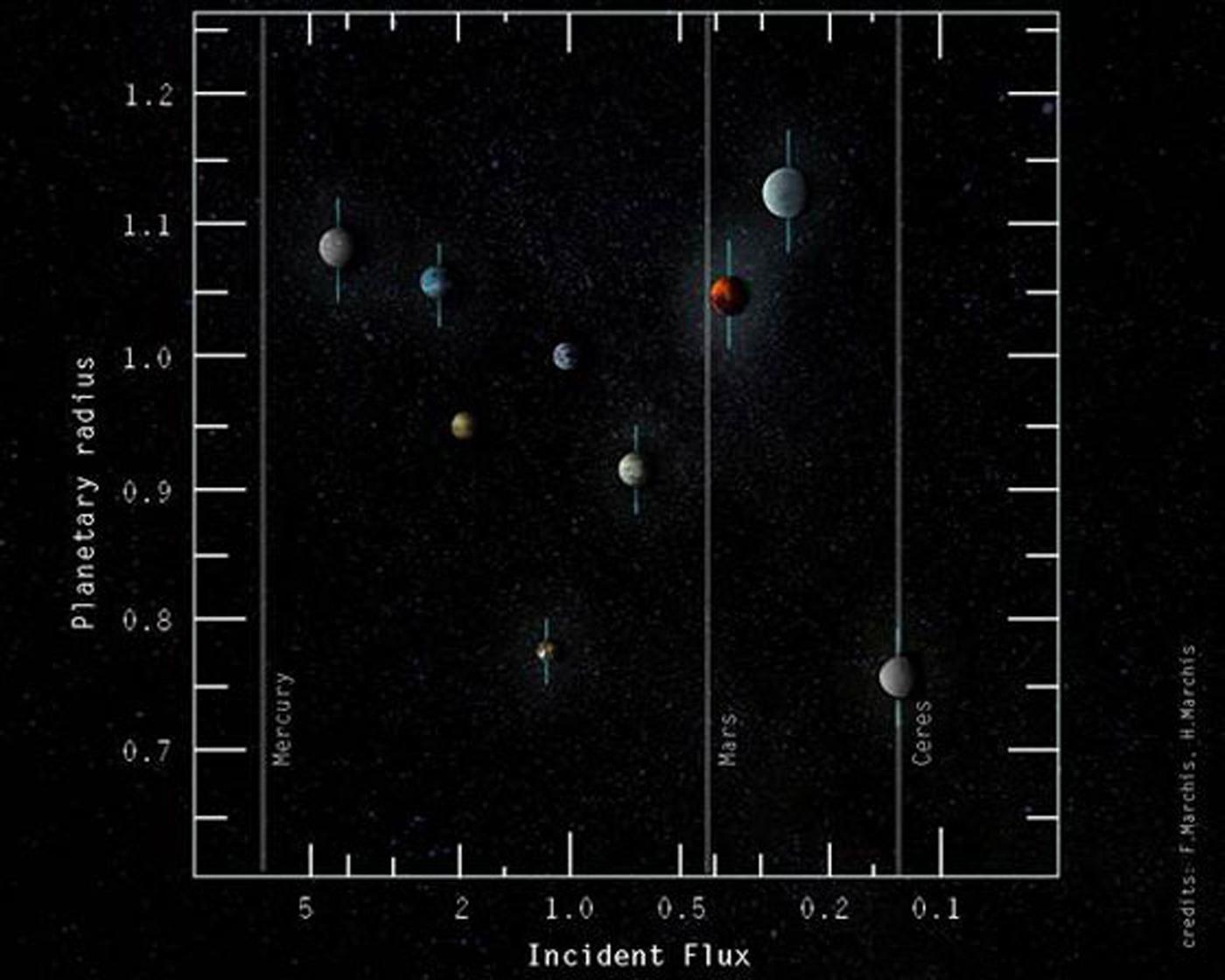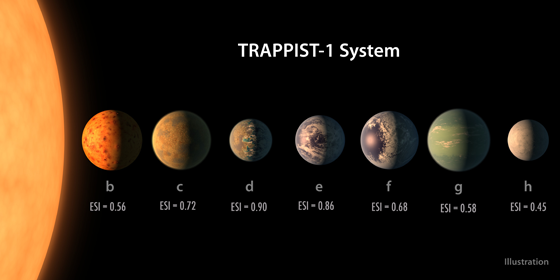Can the planets around a red dwarf star support life?

It’s a dim bulb of a star, but its weak light may fall on living beings.
Trappist 1, a red dwarf star that’s a short 39 light-years’ distant, is hitting the headlines again. It was in the news last year because of the discovery of three accompanying planets. Now a team of astronomers has found four additional worlds in orbit around this ruddy sun.
Remarkably, these planets are of a type that would make them candidates for hosting the dirty chemistry we call “life.” All are roughly the size of Earth, and all receive an amount of sunlight that might make for tolerable temperatures, depending on their atmospheres (if any).
Mind you, this is a planetary system rather unlike our own. It’s more compact than a bonsai bush, and if we could arrange to move all seven of these worlds to our own solar system, they would fit within the orbit of Mercury with oodles of room to spare.
They also orbit far more quickly than the planets you learned about in middle school. A year on any of these worlds would be less than three weeks, and in the case of the innermost planet, only 36 hours. You’d have a hard time keeping up with birthdays. And even though Trappist 1 is two thousand times dimmer than the Sun, the tight orbits of these worlds ensure that the daytime brightness on their surfaces would be similar to those on Earth.

Artist representation of the Trappist-1 system with the exoplanets at scale between each other and the host red dwarf star. The ESI (Earth Similarity Indice) calculated by Abel Mendez (PHL) for each exoplanet is added. For comparison with our solar system planet, Earth ESI is 1, Venus ESI is 0.44, Mars ESI is 0.64. Caution: the ESI is not a direct measure of habitability but formally a fuzzy comparison, using a distance metric, between a selected set of planetary properties of a planet and Earth. see http://phl.upr.edu/projects/earth-similarity-index-esi for more information (image credit: NASA/JPL-CALTECH/F. Marchis)
These seven planets would make a good setting for a sci-fi story. The sky scenery would be magnificent, rivaling anything you’ve seen in the movies. With worlds that are about the same size as Earth but separated by relatively tiny distances, you could look up and see planets that looked like round balls. For example, on the third rock from this dim sun, the second rock would look bigger than the moon does to us. Compare that our own situation, where Venus is only a bright speck. The Trappist worlds would also move far more quickly across the sky than you’re used to. In a matter of minutes, they would change their positions relative to background stars.
In addition, the opportunities for life in the Trappist 1 system make our own solar system look fourth-rate. Life might not spring up on all seven of these worlds, but if just one of them spawned biology, collisions with small asteroids could spread that infection to the other worlds in short order. And if even a single planet eventually produced technically competent beings, that species could quickly disperse its kind to all the rest.
This is not the same challenge that confronts humanity in colonizing our own solar system, where most of the planets are less appealing than limburger perfume and the distances are vast. Typical travel time between worlds in the Trappist 1 system, even assuming rockets no speedier than those built by NASA, would be pleasantly short. Our best spacecraft could take you to Mars in 6 months. To shuttle between neighboring Trappist planets would be a weekend junket.
In other words, it’s both easy and tempting to envision a multi-world empire arising in this star system, a small federation of planets in our cosmic back yard.
But hold on: Just because Trappist 1 sounds good for Klingons or their ilk, is it? Yes, these worlds are the right size and right distance from their home star to be habitable, but that doesn’t guarantee that they are habitable. While we have reason to think that these are rocky worlds, similar in composition to Earth, we still have no observations that could prove the existence of oceans or atmospheres. The James Webb Telescope, now scheduled for launch in 2018, might be able to find evidence for those.
Meanwhile, we can do at least one experiment: Examine this system for radio signals that would indicate the presence of intelligence. And indeed, the SETI Institute used its Allen Telescope Array last year to observe the environs of Trappist 1, scanning through ten billion radio channels in search of signals. No transmissions were detected, although new observations are in the offing.
How sensitive was this search? Assuming that the putative inhabitants of this solar system can use a transmitting antenna as large as the 500 meter FAST radio telescope in China to beam their messages our way, then the Allen Array could have found a signal if the aliens use a transmitter with 100 kilowatts of power or more. This is only about ten times as energetic as the radar down at your local airport.
And whether or not Trappist 1 has inhabitants, its discovery has underlined the growing conviction that the universe is replete with real estate on which biology could both arise and flourish. If you still think the rest of the universe is sterile, you are surely singular, and probably wrong.





